The Hunt for
Planet X
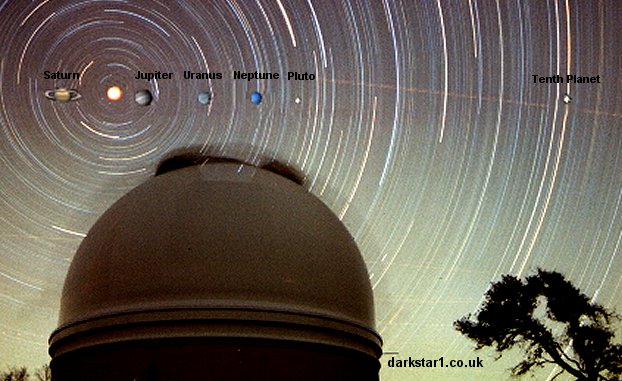
WISE on Target to find Nearby
Brown Dwarfs
The hunt for brown dwarfs and other
potential neighbours to the Sun is picking up speed. Spurred on by the
exciting discoveries made by the Spitzer telescope in recent years, the
scientists preparing the WISE launch are getting increasingly excited about what
they might discover out there (1). It's just a case of who's going to find the
Dark Star first...WISE, SIRTF or the Japanese?
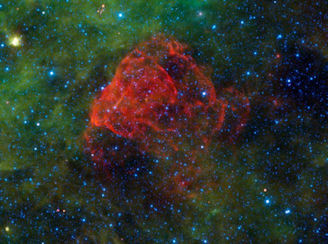
Puppis A, the remnant of a supernova explosion, as seen by WISE
in infrared (2)
Hopefully, we're going to
know within just a couple of years. Here's an extract from a recent press
release from NASA:
"An estimated $300-million mission, the Wide-field
Infrared Survey Explorer, or "Wise," has been in the planning stages for the
past eight years. It is scheduled to launch into an Earth orbit in late 2009. It
will spend seven months collecting data.
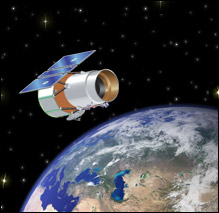
Such
extensive sky coverage means the mission will find and catalogue all sorts of
celestial eccentrics. These may include brown dwarfs, or
failed stars, that are closer to Earth than Proxima Centauri, the nearest
star other than our sun. Brown dwarfs are balls of gas that begin life like
stars but lack the mass to ignite their internal fires and light up like normal
stars. They do, however, produce warm infrared glows that Wise will be able to
see.
"Brown
dwarfs are lurking all around us," said Dr. Peter Eisenhardt, project
scientist for the mission at NASA's Jet Propulsion Laboratory, Pasadena, Calif.
"We believe there are more brown dwarfs than stars in the nearby universe, but
we haven't found many of them because they are too faint in visible light."
Wright,
Eisenhardt and other scientists recently identified brown dwarfs using NASA's
infrared Spitzer Space Telescope. Wise will vastly expand
the search, uncovering those brown dwarfs closest to Earth that might
make ideal targets for future planet-hunting missions.
Recent Spitzer findings support the notion that planets might orbit brown dwarfs."
(1)
Welsh Company helps Hunt for
Planet X
"In a departure from
its core activities of providing networking and IT support to SMEs,
Cardiff-based TiGra Networks
has set up and automated two astronomical observatories for Space Exploration
Limited, based in County Roscommon, Ireland. The project has been developed over
the past 18 months.
"The contract developed out
of TiGra Networks' founder Tim Long's passion for astronomy. Long told Ping
Wales: “I’ve had an interest in astronomy for years. I have been writing
software for amateur astronomers and that’s how Eamonn Ansbro, the director of
Kingsland Observatory, found our website.”
"The observatories based at
the Kingsland Observatory have two primary instruments a 36-inch Newtonian
reflector, reportedly the largest optical telescope in the British Isles, and a
16-inch Schmidt Cassegrain. They will assist the Kingsland Observatory in
asteroid surveys and the search for new minor planets known as Edgeworth-Kuiper
Belt Objects (EKBOs) and in particular Planet X,
a theoretical tenth planet, which could lie at the outermost reaches of the
solar system." (3)
South Pole
Telescope Info
Infra-red sky searches are usually conducted on space-based platforms, like IRAS
in the 1980s, and SIRTF, soon to be launched. There are some telescopes on
the ground, in Hawaii and Chile, which make use of altitude to minimise the
affect of atmospheric water vapour absorbing the infra-red radiation travelling
through the atmosphere from space. But even these locations only allow for
a study of part of the whole I.R. spectrum.
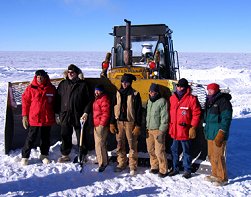
Official Telescope Ground Breaking, 15th November 2004
It seems as though Antarctica
may also be joining the list of Earth-based sites facilitating infra-red
studies, vital to the detection of brown dwarfs and other exotic astronomical
objects:
"A new 10 meter diameter telescope is being constructed for deployment at the
NSF South Pole research station. The telescope is designed for conducting
large-area millimeter and sub-millimeter wave surveys of faint, low contrast
emission, as required to map primary and secondary anisotropies in the cosmic
microwave background. The SPT is a collaboration between the U of Chicago, UC
Berkley, Case Western Reserve University, U of Illinois, and Smithsonian
Astrophysical Observatory, and its primarily funded thought NSF OPP."
"The first key project will be to conduct a survey over approximately 4000
degrees for galaxy clusters using the Sunyaev-Zel'dovich Effect. This survey
should find many thousands of clusters with a mass selection criteria that is
remarkably uniform with redshift. Armed with redshifts obtained from optical and
infrared follow-up observations, it is expected that the survey will enable
significant constraints to be placed on the equation of state of the dark
energy." (4)
For more discussion of the South Pole Telescope and its alleged
connection with the hunt for Planet X, see
Sagittarius
British Astronomers to Begin I.R. Search for Brown Dwarfs
British astronomers are completing work on the world's
largest infra-red digital telescope. The 4 metre wide mirror will be
transported from the Rutherford Appleton Laboratory in Oxfordshire to the site
of the new observatory in Northern Chile. Termed Vista (Visible and
Infrared Survey Telescope for Astronomy) the camera's 64 megapixel images will
help identify brown dwarfs and other invisible objects (5). Note that this I.R.
observatory is being constructed in the Southern Hemisphere.
Extremely Large Telescope Destined for
Antarctica?
Massive ground-based telescopes are currently in vogue
amongst astronomers. images of extra-solar planets have been secured by
Eso's Very Large Telescope, based in Chile. Now there are plans for an
even bigger observatory, with a incredible 42 metre scope (6). This will be
capable of picking up difficult objects like failed cold stars (small brown
dwarfs), extra-solar planets and baby galaxies. Plus stuff we've not even
thought of yet.
What will interest Planet X/brown dwarf enthusiasts is the potential
location for this 1bn Euro telescope: Dome C, a 3000m plateau in Antarctica.
Other possible locations include Tibet, Chile and Greenland. If plans go well,
work could start as early as 2010, and the Extremely Large Telescope could begin
to scan the skies as early as 2016. Antarctica could soon be a very busy place
indeed for astronomers if this location wins the approval of the astronomical
community.
Japanese Infra-Red Search Begins
The Dark Star's existence could be confirmed within months. The Japanese
have launched a new space telescope which plans to scan the entire sky in the
infra-red part of the spectrum (7). This project is an updated and improved
version of the IRAS survey over 20 years ago, and is the first of several
similar sky searches planned in the next couple of years.
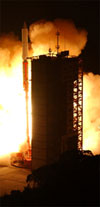
Brown dwarfs are
a particular target for this new telescope, known as ASTRO-F, as well as dead
stars and other objects undetected in the Sun's vicinity. The launch date
was 22nd February, and the search starts properly in April if all the
telescope's systems check out. The search will take 6 months, and then be
followed up by more rigorous study of any anomalous objects found. So we
could well have more clues to the Dark Star's existence by the
end of 2006.
Written by Andy
Lloyd, 2006
author of 'The Dark Star'
(2005), 'Ezekiel One'
(2009), 'The Followers of
Horus' (2010) and 'Darker Stars' (2019)
References:
1)
JPL Press
Release "NASA SAYS: 'BUILD IT AND INFRARED SURPRISES WILL COME'"
13 October 2006, with thanks to Monika and David
http://wise.ssl.berkeley.edu/
2)
WISE "Puppis A"
wise.ssl.berkeley.edu image
3)
M. Delwarde "Welsh
Company Aids Search for Planet X" With thanks to
Lee Covino (article no longer available online)
4)
John Ruhl et al. "The South Pole Telescope" 8 October 2004, thanks to Mattia
spiedigitallibrary.org paper
5) I. Sample "British search for Brown Dwarfs" Guardian 5 August
2006, p13
6) A. Jha "Extremely Large Telescope could reveal secrets of
life, the universe and everything" Guardian 5 August 2006, p13
7) Mark Peplow "Universe to be snapped in infrared:
Japanese survey satellite launches"
With thanks to David Pearson









